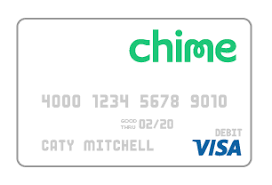When you carry a credit, debit or prepaid debit card with a Visa or MasterCard logo, you’re entitled to zero liability protection should a thief make unauthorized purchases with your card. “Zero liability protection is essentially a choice made by plastic issuers to add an additional layer of fraud protection above what is required by federal law,” says John Ulzheime, president of Consumer Education at SmartCredit.com.
“With zero liability protection, the issuer chooses to absorb any fraudulent charges made on a card.”
Zero liability protection is a voluntary consumer protection from the ubiquitous card networks Visa and MasterCard and is provided to consumers through financial institutions issuing credit, debit or prepaid debit cards utilizing their logos. But there are some key loopholes and exceptions to zero liability protection to keep in mind,especially for debit and prepaid debit card users, according to the research and advocacy group Consumers Union. “If you put in a PIN to make a purchase at the register or put in a PIN at an ATM, you will not be covered,” says Michelle Jun, a senior attorney at Consumers Union. “That’s particularly important for debit and prepaid cards. You wouldn’t be affected as much with a credit card.”
Here’s a look at how zero liability works (and doesn’t) with credit, debit and prepaid debit cards.
Credit cards.
Quite simply, credit cards offer the most protection. Thanks to the
Fair Credit Billing Act, your liability is limited to just $50 if a credit card is lost or stolen. “Credit cards provide the most guaranteed protections under the law,” Jun says.
And if you contact your card issuer as soon as you realize a credit card has been lost or stolen or your card account compromised, you won’t pay a penny of any unauthorized charges a thief rings up, thanks to zero liability protection offered by most card issuers. “Zero liability
protection is not a requirement but given the competitive nature of financial services, not offering zero liability protection really puts you in a less attractive position,” Ulzheimer says.
Debit cards
The Electronic Fund Transfer Act offers federal consumer protections for unauthorized debit
card transactions. But you’ll need to act fast to be as fully covered as possible. “With debit cards, you can limit liability to $50 or $500 depending on how quickly you make the report,”
Jun says.
If you report a debit card missing within two business days, your liability is limited to $50. But if
you wait up to 60 days after your card statement was sent to you, you can lose up to $500. If you wait longer than 60 days, you can lose all the money that was taken from your account, according Beverly Harzog, credit card expert and author of the forthcoming book “Confessions of a Credit Junkie.”
In certain instances, though, zero liability protection can help get the money back in your card account if a thief swipes a debit card. But remember, PIN-based purchases and PIN-based transactions at ATMs may not be covered. So if a thief gets hold of your PIN and goes shopping, you’ll need to act quickly to limit your liability. “Once it falls into the wrong hands, the money is gone,” Jun says. “It’s up to you to make a claim and defend your money.”
Prepaid debit cards
There are no federal consumer protections for lost or stolen prepaid debit cards. Not only that, but a
report by Consumers Union found the voluntary zero liability protections offered for prepaid debit cards “insufficient” and stated there were “significant loopholes” with the coverage.
For instance, Visa’s zero liability policy does not cover ATM transactions or PIN transactions that are not processed on the Visa network. And card transactions may take place on other networks even if the card has a Visa logo, according to Consumers Union. MasterCard’s zero liability policy
also has loopholes, particularly for those who have been victimized by thieves in the past. Indeed, the MasterCard policy does not give any protection if a consumer reported two or more unauthorized events in the past 12 months, does not cover ATM or PIN transactions, and may require the card to be registered, according to the Consumers Union report.
“It’s important to note there are zero liability protections but they aren’t bullet-proof,” Jun says. So what to do? First off, contact your issuer as soon as possible if a thief swipes your prepaid debit card. And check for voluntary consumer protections in your cardholder agreement. “Of course nobody wants to go back and read the contract but if it means you’re going to get your money back it may be something worth doing,” Jun says.
Just be aware that with prepaid debit cards, consumer protections for unauthorized use are voluntary and can be changed or rescinded by the issuer at any time. “Hopefully you’re dealing with a company that’s very reputable and will stand by their word,” Jun says. But if you do have trouble with your card issuer following the theft of a prepaid debit card, you can report the incident to the Consumer Financial Protection Bureau.
While there’s no guarantee that a complaint will get money back into your account, the bureau vows to contact the card issuer on your behalf and request a response, which it will then share with you. If nothing else, the Consumer Financial Protection Bureau says that complaints helps it to write better rules and regulations so that it can better address recurring problems in the future.


